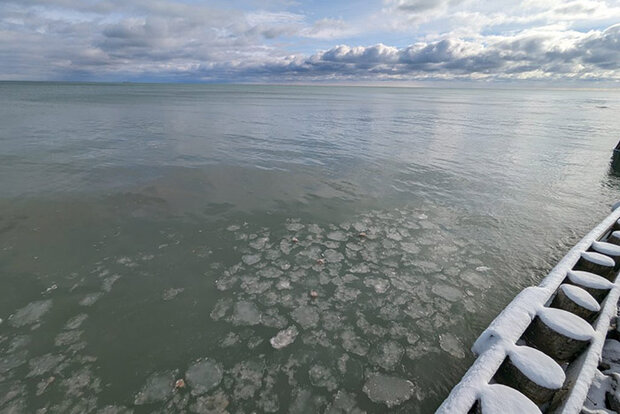Why low ice coverage on the Great Lakes matters

Pancake ice in Lake Huron near Oscoda, Michigan in January 2024. Credit: Gabrielle Farina/NOAA
Many people have been concerned about the low ice coverage that has been observed and recorded in the last few years on the Great Lakes, and have been looking to NOAA experts for information. The current winter season (2023-24) began with very warm air temperatures, resulting in slow ice formation. January 2024 has included a sudden drop in temperatures, bringing forth the potential for big changes on the lake surfaces, and potentially more ice.
More than 27 million people live along the shorelines of the lakes, and ice is a huge part of life in the region. Thick ice protects the lakeshores from erosion and flooding during storms. Because ice cover prevents evaporation, a lack of ice creates the possibility for lake effect snow, causing snowfalls to become larger and more treacherous to nearby cities. Many local economies in the area rely on ice fishing and outdoor sports which can only happen if the ice is thick and solid. Some fish species (such as whitefish) also use the ice for protection from predators during spawning season, and there’s increasing evidence that the ice plays a role in regulating many biological processes in the water.